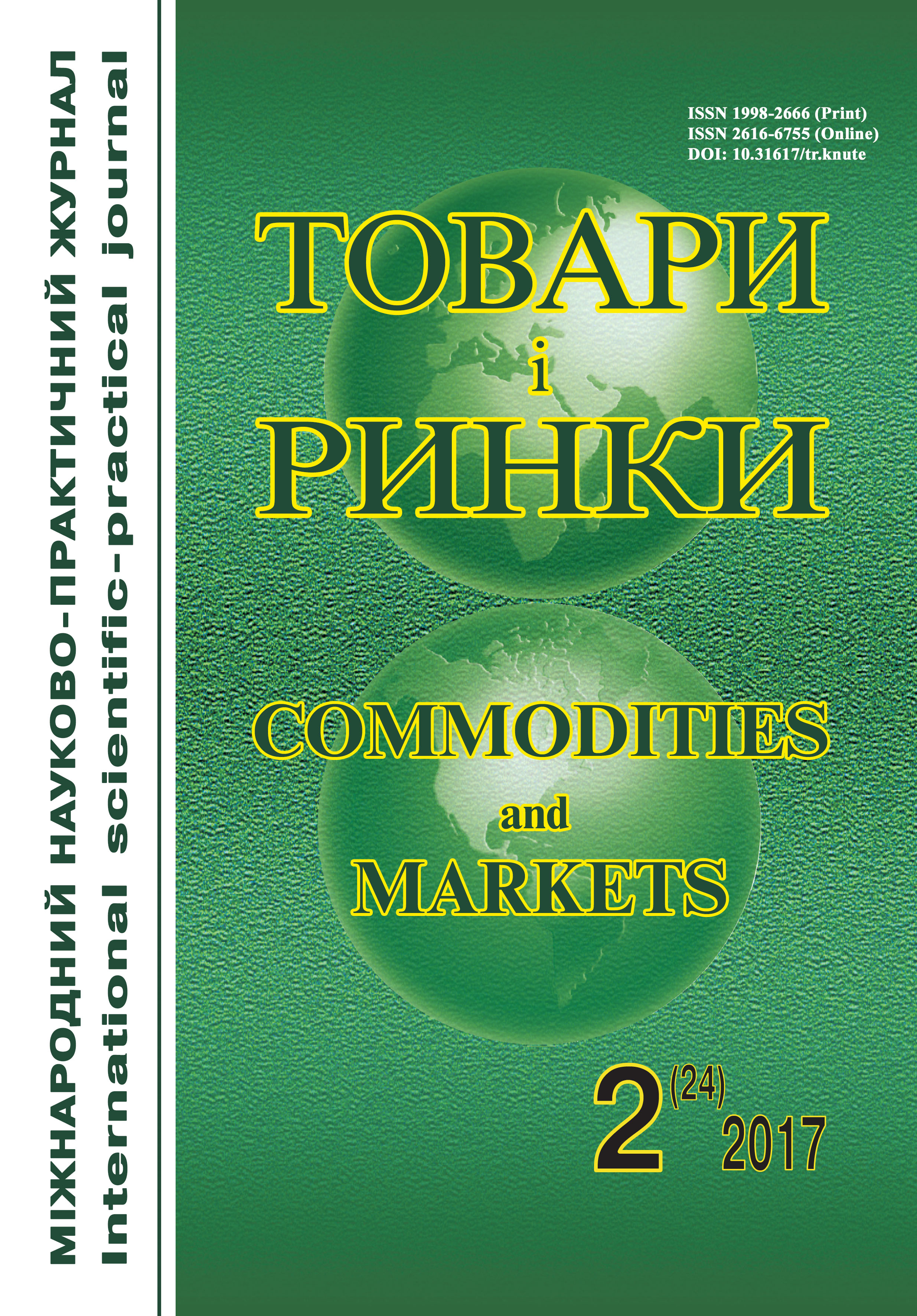Nutritional and energy value of products for special medical purposes
Keywords:
products for enteral nutrition, nutritional value, energy value, nutrient, proteins, fats, carbohydrates.Abstract
Background. The extensive use of products for enteral nutrition in medical clinics gives evidence of their high effectiveness in medical treatment of patients with injuries, burns, diabetes, with liver, kidney or heart failure, in cancer treatment and other pathological conditions. An essential requirement to the products for enteral nutrition is daily supply of the body with main nutrition substances, energy, vitamins and microelements. The demand for enteral medical nutrition has markedly grown in recent years, especially given the increased level of non-infection illnesses in Ukraine, large numbers of the wounded and injured due to the warfare in the East of the country.
The aim of this article is to analyze the nutrition value of products developed specifically for enteral nutrition and estimate their energy value.
Material and methods. The researchobjects are productsdeveloped specifically for enteral nutrition, of Vitalprod brand, intended for persons with certain types of illness. The mass share of overall protein is estimated by content of nitrogen by Kjeldahl method (State Standard 30648.2), of lipids by extraction-weight method with Soxhlet apparatus (State Standard 15113.9), of carbohydratesby Bertrand method.
Results. The conformity ofnutritional value of the developed products to the target consumer segment is assessed by content of main nutrients: proteins, lipids, and carbohydrates.
It was found that all the analyzed products have high content of protein, which is a required condition for the development of products intended for people with certain types of illness. The content of proteins in dry instant products ranges from 19 to 35 %, in gel-like ones it is 2.1–2.8 times higher than the benchmark. In puddings ready-for-consumption, the protein content could be increased 6–10fold by adding milk.
In dry instant products for enteral nutrition, the content of lipids ranges from 17 to 20 %, thus corresponding with their content in benchmark samples. In gel-like products their content is 7.50 to 9.61 %, in contrast to benchmark samples that do not contain a tangible lipid component. The tested mixtures for puddings and the ready-for-consumption products are sufficiently balanced by lipid content.
By the content of carbohydrates, the tested samples of dry instant products are approximately at the same level as benchmark ones.
Results of the energy value testing show that all the tested products in various commodity forms have a bit higher caloricity compared with benchmark samples. Energy needs of the consumers of the developed dry instant products can be met at 16.3–30.9 % by use of the protein contained in whey concentrate, soy isolate and amino acids; at 33.3–40.0 % by use of extract omega-3 of fatty acids; at 29.1–47.1 % byuseofcarbohydrates(glucose, fructose, maltodextrins, inulin, vegetableextracts,etc.). Similar trend can be found in gel-like food products and ready-made puddings.
Conclusion. The analysis of the enteral value of products developed specifically for enteral nutrition shows that they have high contents of proteins, lipids and carbohydrates, which ratios are sufficient to meet the increased needs of patients in macro-nutrients. Further studies of the biological value of developed products are expected.
References
Beljaev O. V. Parenteral’noe y эnteral’noe pytanye v yntensyvnoj terapyy. Kyev : KYM, 2009. 344 s.
Lejderman Y. N., Nykolenko A. V., Syvkov O. G. Nutrytyvnaja podderzhka v otdelenyy reanymatologyy y yntensyvnoj terapyy. Standartnyye algorytmyy y protokolyy : uchebno-metod. posob. dlja vrachej, klynycheskyh ordynatorov, vrachej ynternov. M. : Uralo-Sybyrskaja assoc. klynycheskogo pytanyja, 2010. 36 s.
Luft V. M., Kostjuchenko A. L. Klynycheskoe pytanye v yntensyvnoj medycyne. SPb. : Dylja, 2002. 174 s.
Popova T. S., Shestopalov A. E. Nutrytyvnaja podderzhka bol’nyyh v krytycheskyh sostojanyjah. M. : M-Vesty, 2002. 319 s.
Horoshylov Y. E. Эnteral’noe pytanye: prostoe o slozhnom. Prakty-cheskaja dyetologyja. 2011. № 3. S. 36—40.
Schroeder D., Gillanders L., Mahr K. Effects of immediate postoperative enteral nutrition on body composition, muscle function and wound healing. Journal of parenteral and enteral nutrition. 1991. Vol. 15, N 4. P. 376—383.
Heyland D. K., Cook D. J., Guyatt G. H. Enteral nutrition in the critically ill patient: a critical review of the evidence. Intensive Care Medicine. 1993. N 19. P. 435-442.
Griffiths A., Ohisson A., Sherman P. Meta-analysis of enteral nutrition. Gastroenterology. 1995. Vol. 108, N 4. P. 56—67.
Grasdalen P. The factors of enteral nutrition. Crit. Care Med. 2011. Vol. 6. P. 142—157.
Produktyy molochnyye dlja detskogo pytanyja. Metod opredelenyja obshhego belka : GOST 30648.2—99. M. : Yzd-vo standartov, 1999. 15 s.
Koncentratyy pyshhevyye. Metodyy opredelenyja zhyra : GOST 15113.9–77. M. : Yzd-vo standartov, 2001. 9 s.
Vynogradova A. A., Mel’kyna G. M., Fomycheva L. A. y dr. Obshhye tehnologyy pyshhevyyh proyzvodstv ; pod red. L. P. Koval’skoj. M. : Agropromyzdat, 1991. 335 s.
Kostjuchenko A. L., Kostyn Э. D., Kuryygyn A. A. Эnteral’noe yskus-stvennoe pytanye v yntensyvnoj medycyne. SPb. : Spec. lyt-ra, 1996. 330 s.



